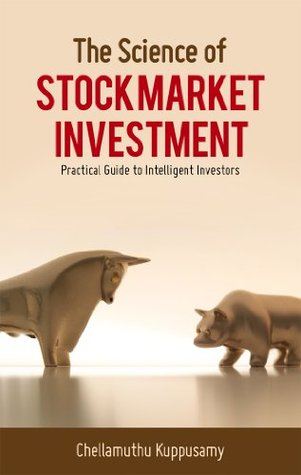More on this book
Kindle Notes & Highlights
Read between
August 9 - September 4, 2017
The inverse of PE ratio is the earning power. If you invest Rs 100 in a stock valued at 12 times of its profits, your investment will earn 8 (100/12.5) rupees. This earning power should be more than the interest offered in the bank or the return from any other fixed income instruments. Graham says it has to be higher by at least 50 per cent. Let us say, bank deposits give 8 per cent interest. In that case you should look for a stock with an earning power of at least 12 per cent (more than 50 per cent of 8 per cent). In that case PE ratio cannot higher than (100/12) 8.22, according to
...more
Moat
There is no second opinion that we need to consider many dimensions before investing in stocks. Trying to assess the prospects of a company in terms of its operation and future profitability is the first stage. The second stage is in figuring out if there is a strategic management team that is capable of setting a vision and running it in accordance with that vision in such a way to propel the company forward towards high profit trajectory. Third stage is about finding out the unique characteristics of the company. It is about finding quality that distinguish the company from the rest. This
...more
In a previous chapter, we debated about the advantages of companies having higher operating margin. A good OPM acts as a shock absorber against stagnating economy, inflation and escalation of input cost etc. These hitches can be easily managed by high margin businesses. This is possible by deploying improved latest technologies, quality control processes, innovative production methods, optimal supply chain management etc, By constantly doing such things a company can establish its advantage – add the prefix ‘long term’ – over other competitors.
Though we might be required to higher price for such companies, durable high margins are an excellent form of moat for investors.
patents can be treated as a kind of moat.
It is the distinction of a quality investor to buy when others sell and sell when other buy. Detaching from the herd is the central quality that we find in almost every successful investor in the world.
our stock selection process we are required to give more emphasis on corporate governance than any other objective or obvious factors. An organization might generate abundant profit. But what is the point if the shareholders never get to enjoy the fruits of this profit?
If FIIs hold sizable portion in a company, it is widely believed to be a good company. Small investors also seem to give too much importance to this factor.
What should we do if we don’t want to see ourselves in a similar situation? 1. Avoid Z group stocks. If we already hold some companies from Z group, then we should get rid of them. That does not mean that other groups are filled with sanity. 2. You should independently and prudently assess if the company and its industry would have a good future (at least 3-5 years). Otherwise, get out of those scripts. 3. Should analyse the profit pattern for at least 5 years in the past. Then this profit trend should be benchmarked with the market leader in that industry. If there are any major
...more
This highlight has been truncated due to consecutive passage length restrictions.
21 Some Common Mistakes
52 week high and low
What is there in pennies
Acting on News (only !)
Reports With Statistics
IPO – A definite road to fortune
Getting Out of Dull Market
Number Game
Face Value Myth
Customised Formula
Nowadays, I don’t think about selling good companies albeit surging price. On the other hand, it is the crap that I try to sell ‘in loss’. Tell you what, it does not pain!
Therefore, I tend to conclude the following. Portfolio allocation policy should not be strictly based on your age. It is prudent to have your interest, maturity, risk taking ability and investment horizon decide your allocation methodology. Your surplus money after meeting all commitments in personal and family life is to be taken as the base. (For many people this amount goes in negative. But still venture to invest in stocks) Maximum up to 75 per cent of this sum can be directed to equities and the rest is recommended to be parked in stable liquid assets from which you might anytime be able
...more
I would say, a decently diversified portfolio of an average retail investor should consists of at least ten companies. It can go up to a maximum threshold of 25 stocks. Expanding further would really complicate things and people like us are not blessed with the amount of time and energy to monitor all of them carefully.


